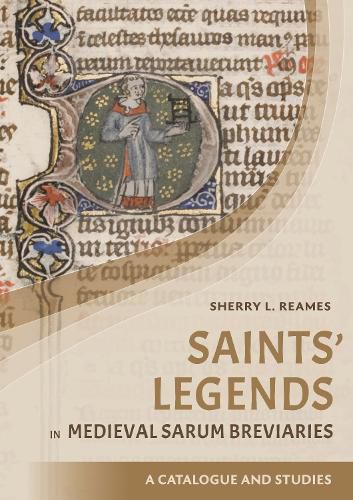Readings Newsletter
Become a Readings Member to make your shopping experience even easier.
Sign in or sign up for free!
You’re not far away from qualifying for FREE standard shipping within Australia
You’ve qualified for FREE standard shipping within Australia
The cart is loading…






Sarum Use was the most widely used form of the liturgy in late medieval England, but its service books were much less standardized than their modern counterparts. The lack of uniformity is particularly marked in Sarum breviaries’ lessons on saints, which can vary enormously from copy to copy. This book is the first comprehensive examination of those lessons and the manuscripts that preserve them. It provides a catalogue of over 80 manuscripts and 12 early printed versions, giving a brief description of each one, sometimes correcting previous views of its date and provenance, and identifying each copy’s divergences from the standard Sarum roster of saints. The book also identifies the textual families into which the manuscripts fall and the extent of their divergence from the lessons in both the early printed versions and the inadequate nineteenth-century edition on which modern scholars have previously depended. The author’s findings offer an introduction to the unexpectedly rich variety of hagiographical lessons that survive, identify some of the sources behind them, and shed new light on the ways in which the Sarum breviary developed and was disseminated in the fourteenth and fifteenth centuries.
$9.00 standard shipping within Australia
FREE standard shipping within Australia for orders over $100.00
Express & International shipping calculated at checkout
Sarum Use was the most widely used form of the liturgy in late medieval England, but its service books were much less standardized than their modern counterparts. The lack of uniformity is particularly marked in Sarum breviaries’ lessons on saints, which can vary enormously from copy to copy. This book is the first comprehensive examination of those lessons and the manuscripts that preserve them. It provides a catalogue of over 80 manuscripts and 12 early printed versions, giving a brief description of each one, sometimes correcting previous views of its date and provenance, and identifying each copy’s divergences from the standard Sarum roster of saints. The book also identifies the textual families into which the manuscripts fall and the extent of their divergence from the lessons in both the early printed versions and the inadequate nineteenth-century edition on which modern scholars have previously depended. The author’s findings offer an introduction to the unexpectedly rich variety of hagiographical lessons that survive, identify some of the sources behind them, and shed new light on the ways in which the Sarum breviary developed and was disseminated in the fourteenth and fifteenth centuries.